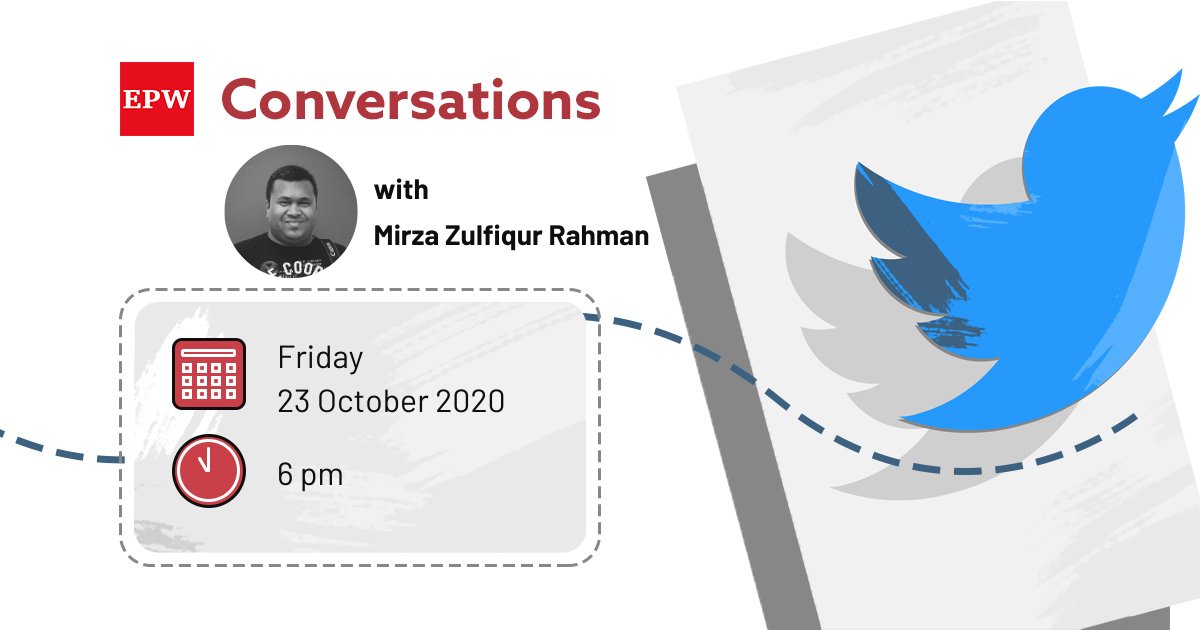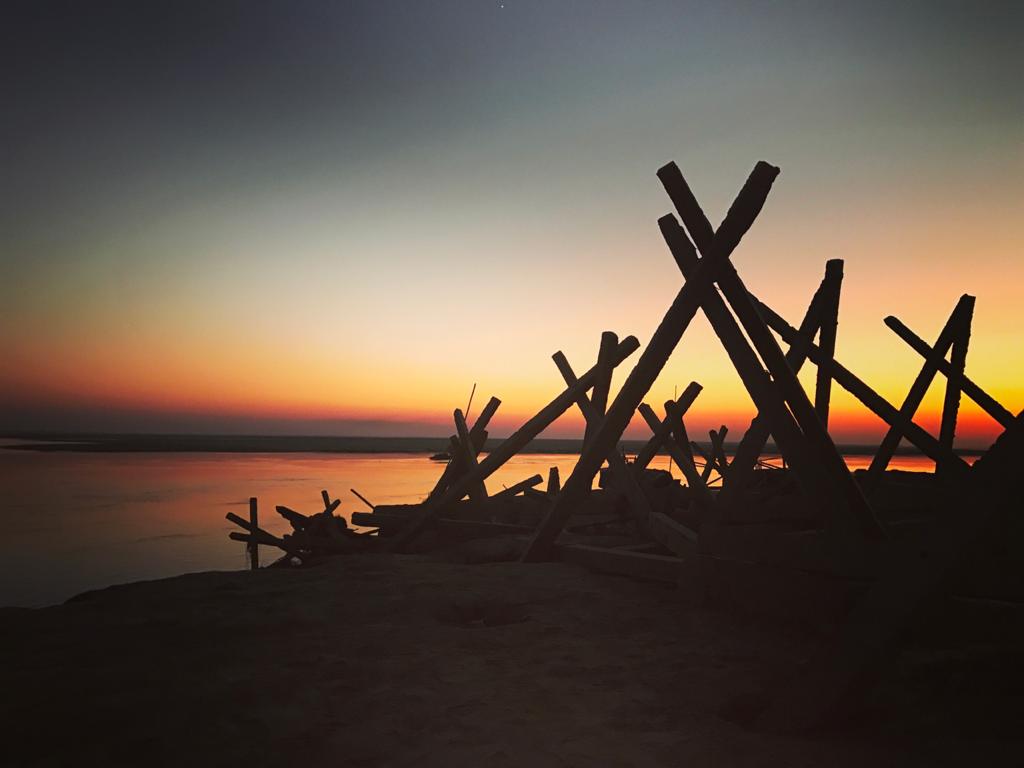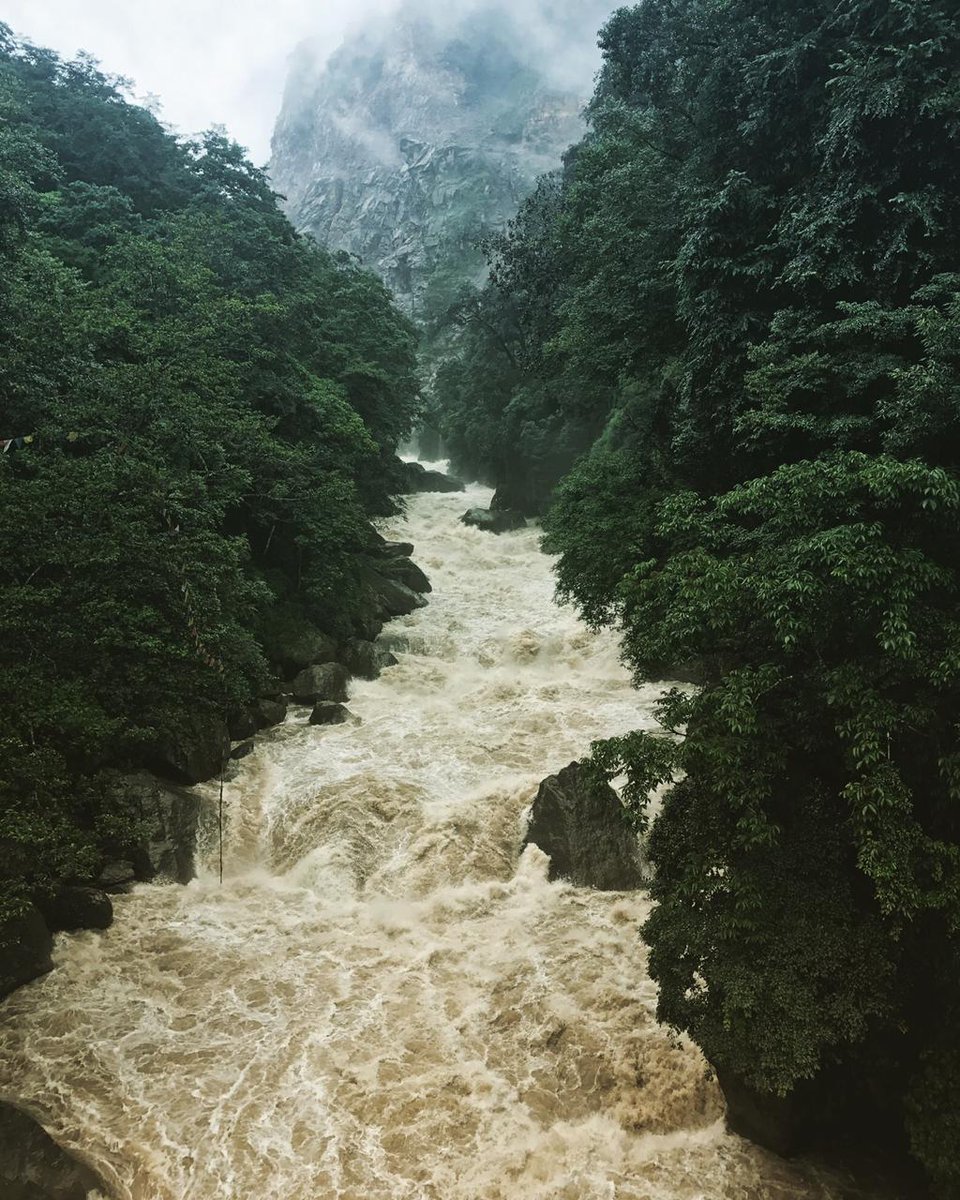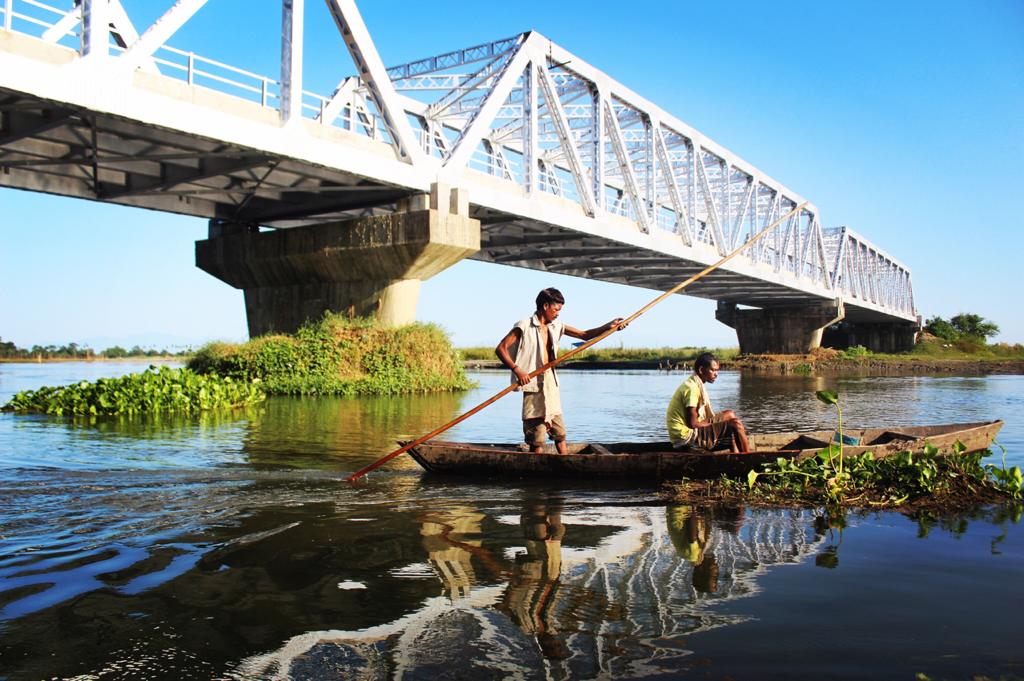#EPWConversations: Today, Mirza Zulfiqur Rahman ( @mirzalibra10) will be talking about his article "Infrastructuring Floods in the Brahmaputra River Basin
Hydrocracies, Hubris, Hazardscapes" from epw_in& #39;s handle. We invite you to join the conversation and ask questions.
Hydrocracies, Hubris, Hazardscapes" from epw_in& #39;s handle. We invite you to join the conversation and ask questions.
The lived experiences of riverine communities are unique to particular river basins, of its ebbs and flows, geomorphology, social, economic and ecological histories! It is through such community imaginations and experiences that we can have a long duree understanding of the river
Run-of-the-River:A term used by dam-builders, engineers and hydrocracies, describing a hydropower dam project, which does not hold back water in a storage reservoir for long duration, and the water is returned to the same river without altering the existing flows and water levels
Run-Away-with-the-River: A term expressed by downstream riverine communities of the 405MW Ranganadi HE Project, who were promised a run-of-the-river dam, but design changes later made it an inter-basin-transfer dam, altering river flows downstream and its biota in the lean season
Floods are regular occurrences in a normal water-abundant environment, and riverine communities have lived with floods for centuries, and have had a history of moving as the river has meandered over time. This is the essence of river-valley and mountain communities, in its nature
"Art of Infrastructuring Floods" relates to the effects of infrastructure projects on the nature and intensity of floods, where riverine communities gradually lose the ability to understand the flood-pulse of the river system, based on their traditional knowledge/flood adaptation
Dam-induced Floods: A type of flash flood which is artificially engineered by the release of water from a dam-reservoir upstream, without proper flood-early warning system in place, severely impacting downstream riverine communities, who are already affected by normal flood cycle
River bank cement porcupine spurs to protect against erosion in Majuli, Assam. Researcher and author @mirzalibra10 took this photo during his fieldwork.
The creation of hazardscapes and precarious living for riverine communities are infrastructured through such anthropogenic interventions, creating new flood discourses, for instance, the annual dam-induced floods seen downstream of the Ranganadi, Doyang and Kopili HE dam projects
Catastrophic floods are not a single, localised or an episodic event, but the effect of multiple events and cumulative hazards spread across a particular river basin, climate change and anomalies, anthropogenic interventions like deforestation, wetland-degradation and disruptions
Floods in a particular river basin cannot be viewed within geopolitical containers, both in the international scale between countries and the domestic transboundary scale between provinces, and is a reductionist, mechanistic and fragmented analysis of causes and effects of floods
Water gushing downstream from the Chhukha HE Dam Project, Bhutan, in August 2017. That year the floods downstream were particularly severe, especially in the plains of Assam and Bangladesh. The author ( @mirzalibra10) took this picture during his visit to Bhutan.
Hydrocracies are intensely territorial in their riparian thinking and administrative functioning across national and province-level scales, which gets reflected in their regimented understanding and mechanisms on the ground, and their river-control, river-taming policy and hubris
The geopolitical framing of river-systems as mere ‘taps’ and river-infrastructure development projects as a strategic ‘race’, shrouded in national security narratives has led to bordering and territorial practices on the flows of transboundary rivers, and securitizing riverscapes
Large hydropower projects are seen as symbols of national pride, as sovereignty markers in contested borderlands, and such infrastructure development are viewed as ‘forward policy’ of territorial presence, for instance, dams built by China and India on the Brahmaputra river-basin
The natural features such as rivers, forests, mountains, wetlands cannot serve by themselves as sovereignty markers, till they are ‘infrastructured’ and ordered by the nation-state, which is done through hydropower dams, mono-cropping plantations, extraction and mining of forests
"Maguri Beel" is an important wetland in Assam. Such bridges often rupture wetland connectivity and lead to its degradation. The author took this picture in 2018. In 2020, this wetland was devastated by a blowout in an oil drilling facility owned by Oil India Limited at Baghjan.
The construction of embankments on the Brahmaputra floodplains serves as a bordering and reordering practice, dividing riverine communities and the natural world they experience, fundamentally altering their traditional relationship with the river, effecting ecological disruption
The construction of flood-control embankments in Assam has created and reinforced over time two very distinct zones, one being the embanked-in and protected zone, and the other being the embanked-away flood-affected community world, contributing to regimented worldviews of floods
The imaginations of flood hazardscapes by riverine communities facing the peaks and troughs of floods annually, sometimes in several waves in a given year, stand in contrast to those of the hydrocracies, who instead engage in infrastructuring such floods through dams, embankments
Infrastructuring floods through embankments on the Brahmaputra river-basin can be seen as protecting urban settlements over rural marginalized riverine communities, and through hydropower dams, creating inter-communal conflicts between upstream and downstream riparian communities
The Brahmaputra is a majestic meander of nature, while the embankments on it are mere straight lines of engineering hubris, the speculative economies of the hydrocracies must give way to democratic environmental justice frames, based on traditional community knowledge/experiences
The hubris of hydrocracies based on hegemonic masculinities must be countered by alternative and gendered responses from the humanities and social sciences and tempered by engaging with community worldviews, interdisciplinarity imitating the braided riverscapes of the Brahmaputra
Thank you to our guest Mirza Zulfiqur Rahman ( @mirzalibra10) for his detailed analysis and contributions. The pictures were a valuable addition! Please join us for our next #EPWConversations on Monday at 6 pm. https://twitter.com/epw_in/status/1319321387291578368?s=20">https://twitter.com/epw_in/st...

 Read on Twitter
Read on Twitter





